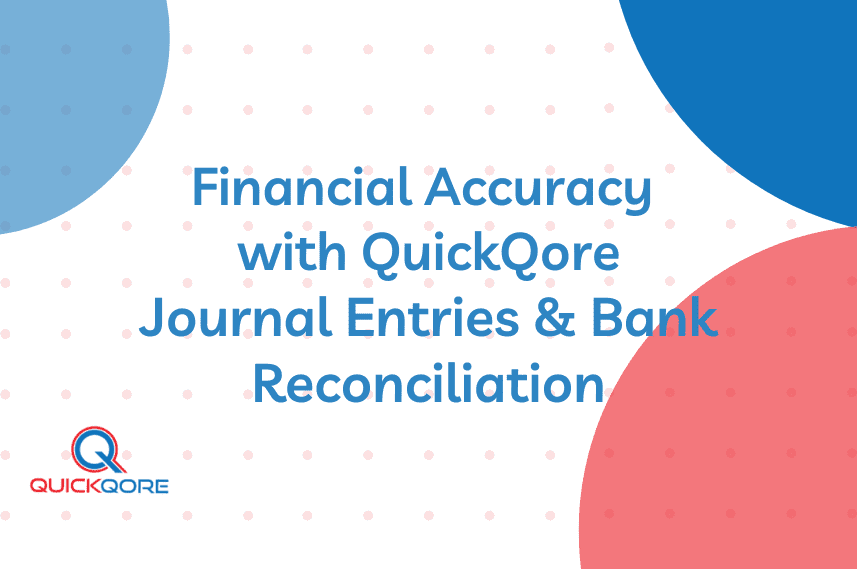Financial Accuracy with QuickQore: Journal Entries and Bank Reconciliation
In today’s fast-paced business environment, maintaining financial accuracy is crucial for the sustainability and growth of any organization. QuickQore is designed to streamline your financial processes, making it easier for you to manage your accounts effectively. This post will cover two essential aspects of financial management: journal entries and bank reconciliation. We’ll also provide links to helpful YouTube videos that demonstrate these processes.
Understanding Journal Entries
What Are Journal Entries?
Journal entries are the foundation of your accounting system. They record all financial transactions in your books and are essential for keeping your accounts accurate and up to date. Each journal entry consists of:
- Date: When the transaction occurred.
- Accounts Involved: The accounts that are affected by the transaction (e.g., cash, accounts receivable, expenses).
- Debits and Credits: Each journal entry must balance, meaning that the total debits must equal the total credits.
- Description: A brief explanation of the transaction.
How to Do Journal Entry
Creating journal entries might seem daunting at first, but with QuickQore, the process is simplified. Here’s a step-by-step guide to help you through it:
- Identify the Transaction: Determine what financial transaction has occurred.
- Determine Accounts Involved: Identify which accounts are affected by the transaction.
- Calculate Debits and Credits: Decide how much to debit and credit for each account.
- Enter the Journal Entry in QuickQore: Use the QuickQore interface to input your journal entry.
To see a practical demonstration of how to make a journal entry, watch this helpful video:
The Importance of Bank Reconciliation
What Is Bank Reconciliation?
Bank reconciliation is the process of comparing your company’s internal financial records with the bank’s statements. This ensures that your cash records are accurate and that all transactions have been accounted for. Regular bank reconciliations help identify discrepancies, such as:
- Errors in data entry
- Missing transactions
- Fraudulent activities
How to Make Bank Reconciliation
A well-executed bank reconciliation can save your business from costly errors. Here’s how to perform it using QuickQore:
- Gather Your Bank Statement: Obtain your bank statement for the relevant period.
- Compare Transactions: Check each transaction in your bank statement against your internal records.
- Identify Discrepancies: Note any discrepancies, such as transactions that appear in one record but not the other.
- Adjust Your Records: Make necessary adjustments in your QuickQore system to correct any errors or omissions.
- Finalize the Reconciliation: Once all discrepancies have been resolved, confirm that your adjusted cash balance matches your bank statement balance.
For a visual guide on performing bank reconciliation, check out this video:
How to Make Bank Reconciliation
Conclusion
Accurate financial management is vital for the success of any business, and QuickQore provides the tools necessary to achieve this. By understanding and implementing journal entries and bank reconciliation, you can ensure your financial records are precise and reliable. Regularly updating your journal entries and reconciling your bank statements not only saves you time and effort but also helps you make informed decisions for your business’s future.
By utilizing resources like QuickQore and the linked videos, you can enhance your understanding of these essential accounting practices. If you haven’t already, consider signing up for a free trial of QuickQore to experience firsthand how it can streamline your financial processes

